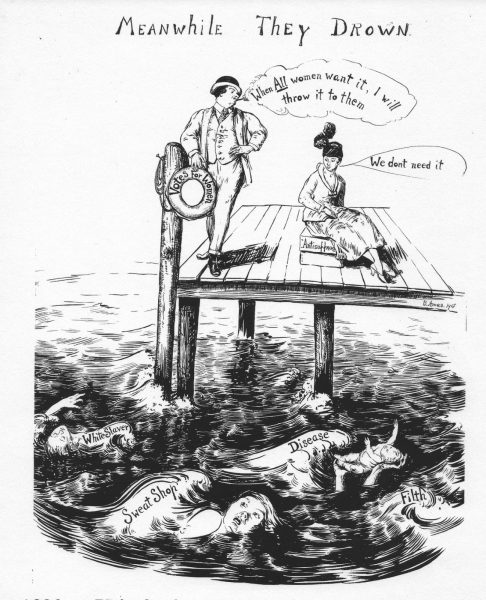LEMONS IN THE GARDEN: NOT FAMOUS ENOUGH
Forty years ago, I had a dream in which Blanche Ames told me to write her autobiography. I’d read about Blanche while I was working on a team to write a massive women’s history reference book, and of course her name caught my attention. Then I learned that Blanche was my grandmother’s aunt.
How was I supposed to write an autobiography for a woman I’d never met? I thought about writing Blanche’s biography, but I was advised by an editor I respected that Blanche wasn’t famous enough for a book about her to sell sufficient copies. The field of women’s history was still young at that time. Traditional historians focused on the men who were leaders in the military, politics, business, religion, the arts, and other fields – not women. I figured what I wrote would have to be fiction – historically accurate fiction. It seemed to me that writing Blanche’s autobiography meant I should draft my own version of her diary.
So, I started doing research. I spent days perusing primary sources in the Ames Family Papers within the Sophia Smith Collection at Smith College. I perused cartoons by Blanche, notes, speeches, meeting minutes, flyers, and newspaper and magazine articles. I didn’t find diaries by Blanche but I found letters to and from her.
Born in 1878, Blanche Ames was fiercely committed to women’s rights. She was active in the suffrage movement, participated in marches, and created political cartoons that were published in newspapers and magazines across the country. This is the one that was excoriated by President Taft in the Saturday Evening Post.

[Reprinted from the Ames Family Collection by permission of the Sophia Smith Collection at Smith College]
Nevertheless, in 1916 when socialist Van Kleek Allison was arrested for distributing pamphlets on limiting births among the poor, Blanche helped organize his defense committee and co-founded the Birth Control League of Massachusetts, where she served as president until 1935.
Birth control was a radical cause for a privileged woman like Blanche, but she believed that women had to gain control over their bodies if they were to be able to map out their own lives.
The Birth Control League held rallies and public meetings and lobbied legislators.
Blanche went further: she carved a penis and took it out on Commonwealth Avenue in Boston demonstrating how to apply a condom. She was arrested, but released once the police learned she was the daughter of a governor. She cooked up recipes for spermicides and made diaphragms in her home using liquid latex and rings.
Blanche was also a portrait painter, a botanical illustrator, the wife of Oakes Ames (a Harvard professor and world authority on orchids), and mother of their four children. She had such a multifaceted personality! How could I cram Blanche into a character I could present through a diary? Her eyes in the photo on my writing desk inspired me to keep trying.
The problem with doing a lot of research is that one can get bogged down. I love the details, like reading that Blanche and Oakes rang an old bell every night until women won the vote. But a writer can drown in details. I had a lot of information about Blanche, but all the facts I learned didn’t actually provide me with a plot to propel the action. I didn’t know exactly what drove Blanche.
In writing Lemons in the Garden of Love, I wanted to create a central character whose motivations are transparent and understandable. Blanche was the inspiration for the character of Kate, but Kate has a life of her own. I dug into Kate’s emotions and determined what she is most passionate about. What does she want? What happens when she doesn’t get what she wants? I created challenges for Kate in order to bring the story to life. As a result, Kate’s history diverges from Blanche’s. Kate has a botched abortion in Paris while studying painting there. Later she learns that she can never have children.
To provide more tension, I created a protagonist named Cassie, Kate’s descendent. A graduate student in women’s studies in 1977, Cassie is seeking a topic for her doctoral dissertation. On the way to her sister’s wedding in Massachusetts, she stops at Smith College and discovers Kate’s suffrage cartoons, records of the Birth Control League of Massachusetts, and many other items. At the wedding, Cassie starts hearing bits and pieces about Kate’s life, and she tries to piece together what happened to Kate in Paris. Then Cassie’s story begins to parallel Kate’s in surprising ways.
In 1984 I sent my first version of this novel to the Feminist Press, who turned it down. After many other queries, an editor at Seal Press told me they really liked my story, but she advised me to send the manuscript to the Feminist Press. At that point, I put the manuscript away. Over the following years I learned a lot from writing two award-winning historical novels: Eleanor’s Wars and Don’t Put the Boats Away.
When the 45th President was inaugurated in 2017, I pulled the manuscript back out. I believed that my story had become more relevant given the state of the nation and the increase in the limits being placed on women’s reproductive rights. I reworked my story until I had a manuscript that passed muster with She Writes Press. Ironically, I finished the last chapter during the inauguration of our new President on January 20. We’ll see whether this novel is actually as timely as I believe it to be when it is released on May 11.
—
 AMES SHELDON: was born in Minneapolis, Minnesota, and grew up in Wayzata, Minnesota. After graduating from Northrop Collegiate School, she attended Bryn Mawr College, where she majored in English. After graduating, she worked in the legal department of a chemical company, as a reporter at two newspapers, as office manager of a start-up auto salvage business, and eventually as a grant writer and development officer for a variety of nonprofit organizations, ranging from the Sierra Club in San Francisco to the Minnesota Historical Society and the Minneapolis Public Library.
AMES SHELDON: was born in Minneapolis, Minnesota, and grew up in Wayzata, Minnesota. After graduating from Northrop Collegiate School, she attended Bryn Mawr College, where she majored in English. After graduating, she worked in the legal department of a chemical company, as a reporter at two newspapers, as office manager of a start-up auto salvage business, and eventually as a grant writer and development officer for a variety of nonprofit organizations, ranging from the Sierra Club in San Francisco to the Minnesota Historical Society and the Minneapolis Public Library.
She has an M.A. in American Studies and was lead author and associate editor of the groundbreaking Women’s History Sources: A Guide to Archives and Manuscript Collections in the United States (R.R. Bowker, 1979). In the process of working on this monumental reference book, Ames discovered her love of women’s history and of using primary sources for research.
Her debut novel, Eleanor’s Wars, won the 2016 Benjamin Franklin Gold Award for Best New Voice: Fiction. Her second novel, Don’t Put the Boats Away, was published on August 27, 2019, by She Writes Press. Her third novel, Lemons in the Garden of Love, will be published in 2021. For more information on Sheldon’s life and work, please visit: http://amessheldon.com/
LEMONS IN THE GARDEN OF LOVE
 Award-winning author weaves tales of 1st and 2nd wave feminism into a compelling, essential read
Award-winning author weaves tales of 1st and 2nd wave feminism into a compelling, essential read
“[A] relatable and emotional saga” – BookLife, by Publishers’ Weekly
Minneapolis, Minnesota–After Justice Ruth Bader Ginsberg’s passing in September, social media instantly flooded with posts mourning and honoring Ginsberg’s life and legacy. Yet the newly vacant Supreme Court seat also caused concern, with many women wondering if, how, and when their access to birth control would be impacted. At a time when reproductive rights are still being contested across the country, novels like “Lemons in the Garden of Love” (She Writes Press, May 11, 2021) should be required reading.
In “Lemons in the Garden,” it’s 1977 and Cassie Lyman, a graduate student in women’s history, is struggling to find a topic for her doctoral dissertation. When she discovers a trove of drawings, suffrage cartoons, letters, and diaries at Smith College belonging to Kate Easton, founder of the Birth Control League of Massachusetts in 1916, she believes she has located her subject.
Digging deeper into Kate’s life, Cassie learns that she and Kate are related―closely. Driven to understand why her family has never spoken of Kate, Cassie travels to Cape Ann to attend her sister’s shotgun wedding, where she questions her relatives about Kate―only to find herself soon afterward in the same challenging situation Kate faced.
A moving portrait of two women, whose stories shed light on the life-changing power of the ability to determine one’s reproductive future.
Praise for the author…
Lemons in the Garden of Love is “part feminist history, part journey of self-discovery… Sheldon’s evocative prose and compelling sense of the sweep of history grabs attention from page one.”
–BookLife, by Publishers’ Weekly
“Don’t Put the Boats Away is chock-full of well-researched historical details about political events, medical advancements, and even food trends of the 1940s, ’50s, and ’60s, and it also offers important commentary on professional opportunities for women during these decades. The author creates believable characters with complex interior lives. Overall, it’s a touching tale that examines the ways in which grief, regret, and unmet expectations can reverberate through generations.”
–Kirkus Reviews
Category: Contemporary Women Writers, How To and Tips

























